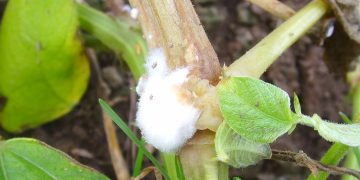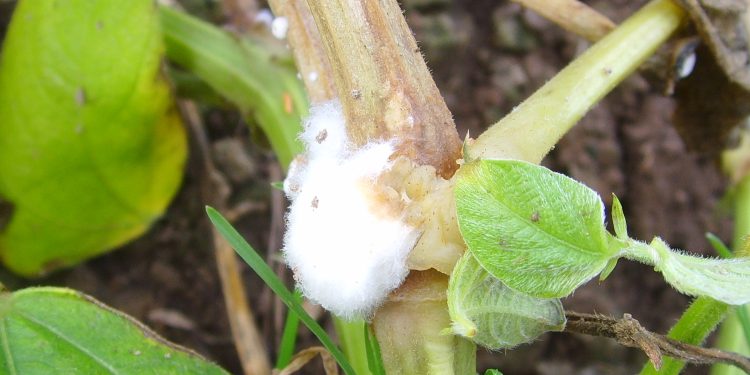#CropDiseaseControl #PlantPathology #FungalDiseases #AgriculturalManagement #GeneticTools #RNAiTechnology
Pink rot, caused by the fungus Sclerotinia sclerotiorum, is a devastating disease that affects a wide range of crops, including beans, lettuce, and soybeans. The disease can cause extensive damage to crops, resulting in significant yield losses and reduced quality of produce.
S. sclerotiorum is a necrotrophic pathogen that attacks plants by secreting enzymes that break down cell walls, leading to the production of soft, water-soaked lesions. As the disease progresses, the lesions turn brown and become covered in a pinkish mold, giving the disease its characteristic name.
The development of pink rot can be influenced by various environmental factors, including temperature, humidity, and plant stress. Additionally, the fungus produces sclerotia, which are hard, black structures that can survive in the soil for several years, making crop rotation strategies less effective.
To address the problem of pink rot, several management strategies have been developed. These include the use of fungicides, cultural practices, and biological control agents. Fungicides can be effective in controlling the disease, but their use can be costly and may lead to the development of resistant strains of the fungus. Cultural practices, such as crop rotation and sanitation, can also help reduce the impact of the disease. Biological control agents, such as Trichoderma spp. and Bacillus spp., have shown promise in controlling pink rot, but more research is needed to fully understand their effectiveness.
The development of new genetic and molecular tools is also providing new opportunities to address the problem of pink rot. For example, the identification of genes associated with resistance to the disease could allow for the development of resistant crop varieties. Additionally, the use of RNA interference (RNAi) technology to silence genes in the fungus could provide a novel approach to controlling pink rot.
Рink rot caused by Sclerotinia sclerotiorum is a serious problem for many crops. However, through the use of a combination of management strategies and the development of new genetic and molecular tools, it is possible to reduce the impact of the disease and improve crop yields.































